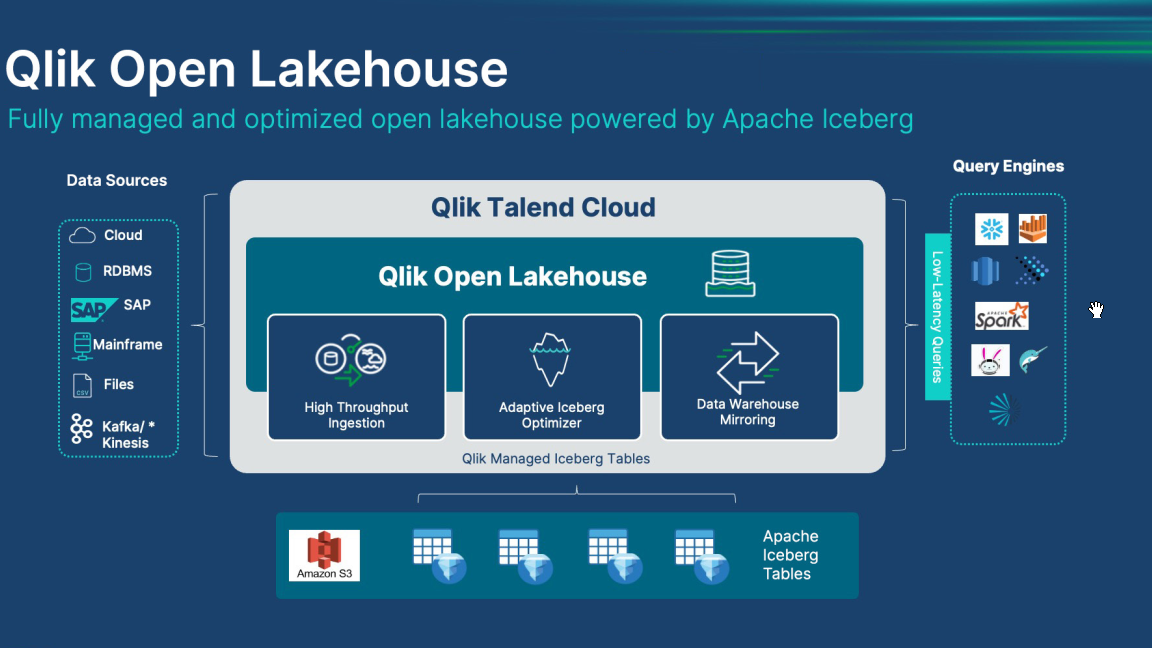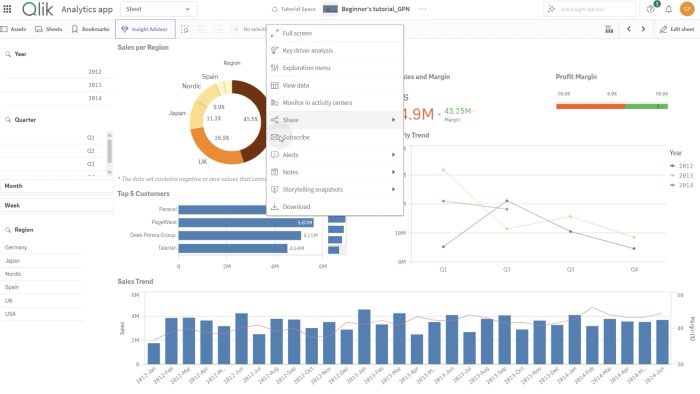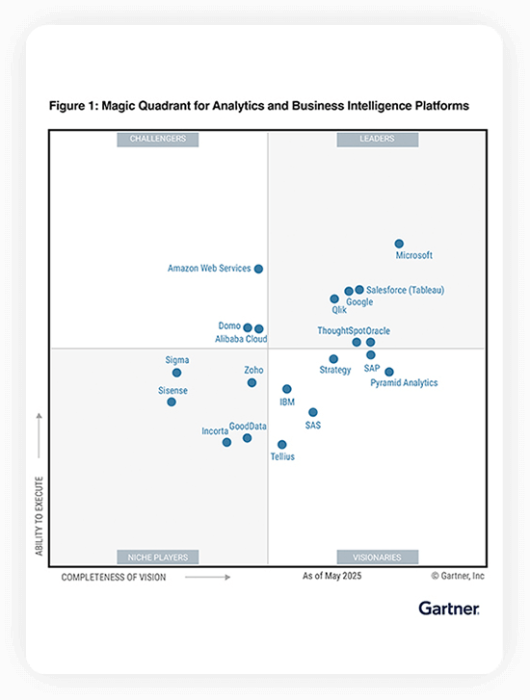Quo vadis Qlik? Part 1 – Open Lakehouse
May 5, 2025

Reading time: 3 min
By Maris Svilans,
Head of Sales, Co-Founder, The Infotrust

This article is just my personal take. Even before I started with Qlik I’ve known that Qlik is strong at it’s core – crunching large chunks of data fast and business always were impressed how fast the business value can be unlocked (and how much the project time has shortened). Gartner recognized Qlik as a leader back in 2011 and stayed there ever since – remarkable sign for ability to innovate.
Fast forward to 2025 and Qlik is also leader two additional quadrants: data integration and data quality. Some customers might have even missed it since it happened so fast. Qlik seems to be evolving into something more. Where is it all going? That’s what I’m exploring in this series.
- Qlik has long set the standard in advanced analytics. Its unique associative engine allows users to interactively explore complex, multi-dimensional scenarios – such as simulating product cost prices using SAP-based Bills of Materials (BOM) combined with real-time market data. This capability makes Qlik ideal for critical, high-value decision-making. And now, with the move to unlimited users, Qlik can empower entire organizations without the constraints of per-user licensing costs.
- Qlik has democratized machine learning with AutoML, allowing analysts to build predictive models. With the addition of Qlik Answers (LLM) you can add unstructured data – from legal documents and customer feedback to maintenance manuals.
- Change Data Capture (CDC) capabilities enable businesses to effortlessly integrate real-time data from virtually any source – databases, SaaS applications, and ERP systems like SAP. Combined with robust, automated transformation capabilities , this ensures your analytics remain timely, accurate, and actionable.
- Data quality and cataloging capabilities provide comprehensive lineage across your entire enterprise data stack – from on-premises solutions like Oracle and SQL Server, through cloud platforms such as Azure and Snowflake, and all the way to BI front-end tools including SAP BusinessObjects, Tableau, and Power BI. This gives organizations complete visibility into data flows, usage patterns, and data quality – creating a foundation of trust in data-driven decisions.
- And now, with the acquisition of Upsolver, Qlik is stepping into Iceberg Tables and Data Lakehouse space.
So how does Lakehouse fit into the big picture? That’s exactly where I’ll start. Let’s dig into the first piece – Open Lakehouse.

Why the market is rethinking architecture?
Market volatility requires faster decisions and which drives need for real-time data. The traditional model of nightly or even hourly refreshes is no longer enough. Business expects dashboards and AI models to be powered by data that’s minutes (sometimes – seconds) old. The need for fast, scalable, and cost-efficient access pushes organizations to look for alternatives. In such case Data Lakehouse promises benefits of a data warehouse at the cost of data lake. Can it be true?
A Quick look at what a Lakehouse is
A Data Lakehouse merges low-cost cloud storage with structured, governed access. It supports both structured and unstructured data, enabling real-time streaming and batch processing on the same platform.
The secret ingredient? Open table formats, especially Apache Iceberg – a format that supports ACID transactions, schema evolution, time travel, and an open catalog that works across platforms like Spark, Flink, Trino, Presto, Snowflake, and more.
Compared to Delta Lake – which is more tightly controlled by Databricks – Iceberg stands out for its vendor neutrality and community-driven development.
Where Qlik fits in
Qlik simplifies the adoption of the Lakehouse architecture by streamlining the entire process – from initial data ingestion to optimized analytics delivery.
- Data Ingestion allows ingest both batch and real-time data into Apache Iceberg tables from virtually any source, including traditional databases, cloud applications, and complex systems like SAP. With powerful Change Data Capture (CDC) capabilities, Qlik ensures data is continuously refreshed, accurately capturing Type 1 (overwriting historical data) and Type 2 (maintaining historical versions) changes.
- Once data is ingested, Qlik continuously optimizes Iceberg tables using its Adaptive Iceberg Optimizer. Automation performs smart partitioning, compaction, and maintenance tasks automatically. Query speeds can increase by up to 5x and storage costs by up to 50%.
- Snowflake Mirroring – organizations already leveraging cloud data warehouses like Snowflake benefit greatly from Qlik’s approach. Qlik can automatically mirror data from Iceberg tables into Snowflake without creating redundant copies. This hybrid integration ensures that analytics teams can leverage Snowflake’s robust capabilities, perform further data transformations, or support specialized analytics scenarios without costly duplication or unnecessary data movement.
- Finally, Qlik ensures complete openness and compatibility across the data ecosystem. By integrating seamlessly with top-tier data catalogs (such as AWS Glue, Polaris, and Snowflake Open Catalog) and supporting industry – standard query engines – including Snowflake, Amazon Athena, Databricks, Apache Spark, Dremio, ClickHouse, Flink, Trino, and Presto – Qlik empowers users to run high-performance analytics on massive data volumes, regardless of their choice of analytics platform. This open approach helps future-proof data investments and avoids vendor lock-in, ensuring businesses retain complete flexibility to evolve their data strategies as needed.
Why companies are choosing the Lakehouse Model
✅ Reduces costs by avoiding redundant data copies
✅ Combines real-time and historical data in a single analytics stream
✅ Improves data governance and compliance
✅ Enables collaboration between analytics, engineering, and ML teams
✅ And with platforms like Snowflake and Qlik (but also any other) – it just works, without needing to manage infrastructure
Quo vadis Qlik? Part 2 – Advanced Analytics with the Associative Engine>
Would you like to learn more? Contact us.
Discover how organizations are building powerful, scalable Lakehouse platforms – and why Qlik may be at the center of it all.





3 min